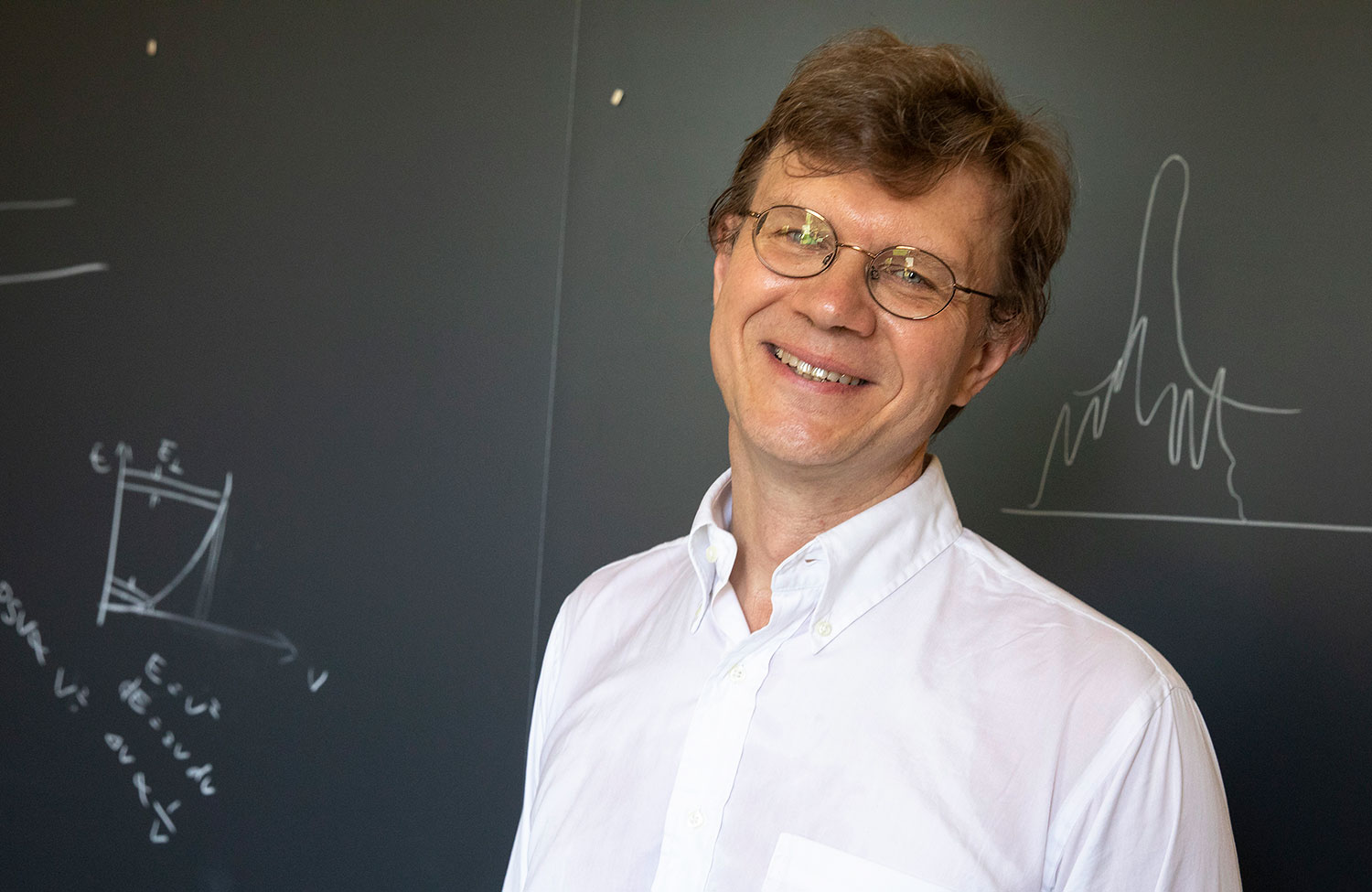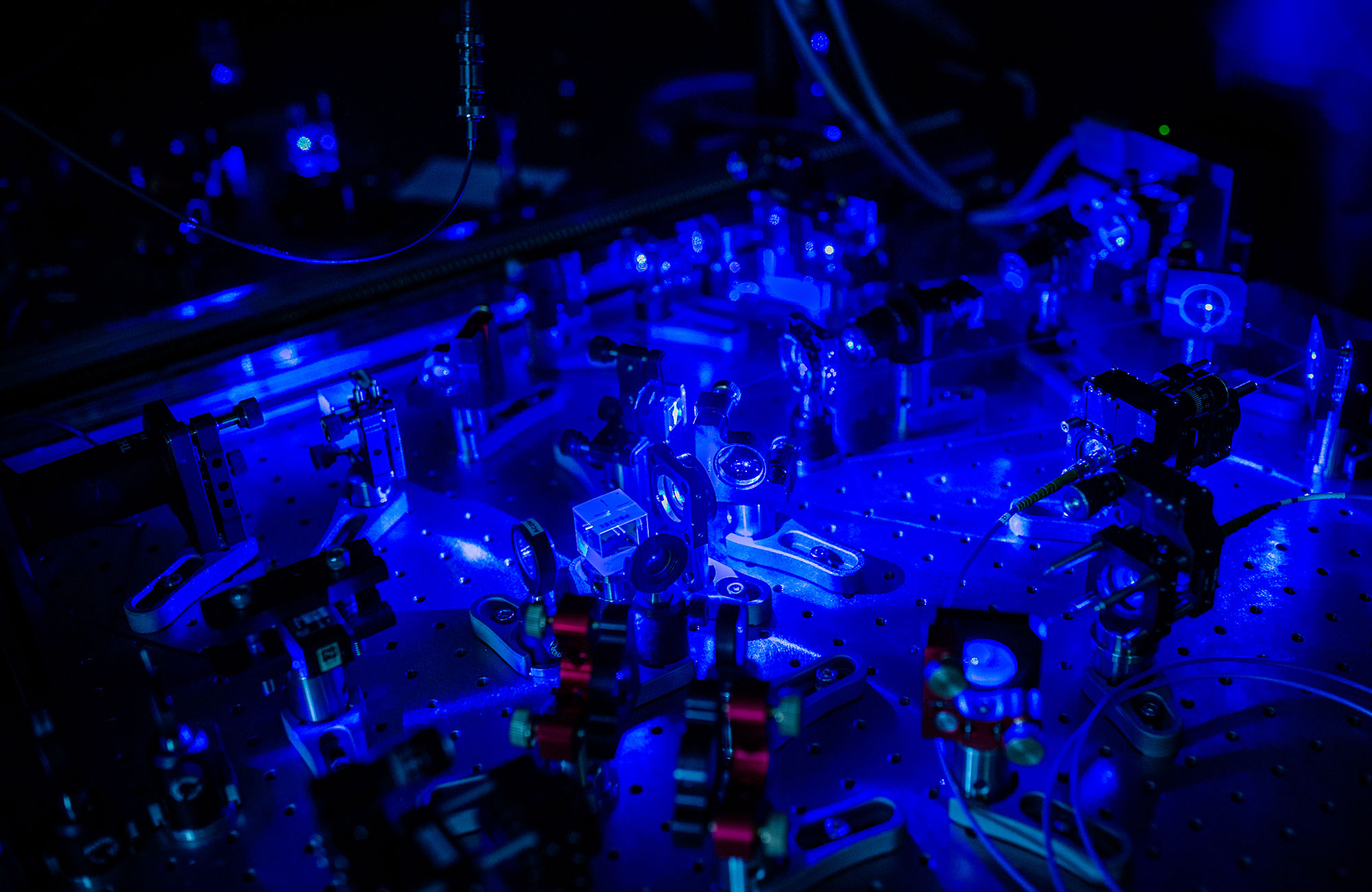This quantum machine seems to contradict the Universe’s desire for disorder.
One of the first quantum simulators demonstrated a mysterious phenomenon: a number of atoms, which periodically returns to an ordered state. Physicists are trying to explain what is happening.

Melting ice cream is not subject to spontaneous freezing. However, one of the quantum simulators is constantly returning to an ordered state after the system reaches equilibrium.
It will take enough time, and even in the tidiest room there will be a mess. Clothing, books and papers will leave their orderly condition and scatter on the floor. And, annoyingly, this tendency towards disorder reflects the law of nature: disorder tends to grow.
')
If, for example, you open a scuba diving tank under pressure, the air molecules inside it will fly out and fly around the room. Place the ice cube in hot water, and the water molecules frozen in the ordered crystal lattice will break their bonds and disperse. When mixed and distributed, the system tends to balance with the environment, which is called thermalization.
This is a common and intuitive effect that physicists, who have built 51 rubidium atoms in a row, and kept them in place with the help of lasers, expected to see it. Atoms started with an ordered structure, and switched between the “ground” state with minimal energy and the excited state. The researchers suggested that this system quickly becomes thermalized: the alternation of ground and excited states will almost immediately calm down in the form of some sort of random sequence.
At first, the sequences were really erratic. But then, to the surprise of scientists, they returned to the original intermittent sequence. After additional mixing, the atoms again returned to their original configuration. The states were interspersed back and forth with a frequency several times in a microsecond - long after the system had to thermalize.
It looked like you dropped an ice cube in hot water, and it didn’t just melt, said Mikhail Lukin , a physicist at Harvard University and the leader of a group of scientists. “We see ice melting, then crystallizing, then melting, and crystallizing again,” he said. “This is something very unusual.”
Physicists have called this strange behavior "multi-particle quantum scarring." Atoms, apparently, carry the imprint of the past, as if some kind of scar, which causes them to return to the original configuration again and again.
During the 16 months that have passed since the publication of the work in the journal Nature, several groups of physicists tried to understand the nature of these quantum scars. Some believe that this discovery could open up a new category of interaction and behavior of quantum particles, denying the assumption of physicists that such a system is inexorably moving toward thermalization. In addition, the effect of scarring can lead to the creation of new types of quantum bits for long-term storage, which are key ingredients for future quantum computers.
Overcoming zero probability
Physicists in fact, when building a system of 51 atoms, had in mind quantum computations. This system was conceived as a quantum simulator, a machine designed to simulate quantum processes that cannot be investigated by other methods using a classical computer. At one time, this system was the largest quantum simulator of all.
The atoms of the Harvard machine serve as qubits, and their states, primary or excited, are called Rydberg . Researchers can adjust the system by changing, for example, the strength of the interaction of atoms with each other.
Researchers have prepared several initial sequences of ground and excited states of atoms. Since atoms actively interact with each other, they must come to thermalization. But instead of interactions resembling molecules in a gas, atoms in such a quantum system produce a kind of deep quantum communication, known as entanglement. “And then the confusion spreads,” said Lukin. “This is how thermalization occurs.”

Mikhail Lukin
And usually the confusion in the simulator grew. However, when the researchers launched the experiment, having arranged the atoms in a sequence of alternating excited and ground states, the particles first became entangled, and then lost it, fluctuating to and fro from the initial configuration.
This behavior seemed unlikely, on the verge of the impossible. After the atoms begin to interact, their alternating sequence must very quickly be forgotten, since the atoms can go into a huge number of possible sequences of excited and ground states. This is similar to the example of a balloon, the air molecules from which leave the original configuration and spread around the room. For their distribution, there is a huge number of places, so the likelihood that they all accidentally squeeze back into the balloon is almost zero.
“A quantum system can exist in such a number of possible states that it would be extremely difficult for it to return to its original state,” said Zlatko Papic , a physicist at the University of Leeds in England.
However, Lukin says that this is exactly what they observed. The system is endowed with some kind of special physics that allows it to go back on its own path, said Papic. "She leaves behind a trail of bread crumbs, and returns to the beginning of the path."
"This is the first real discovery made with a quantum machine," said Lukin.
Lukin and his colleagues began to describe the experiment, but before the publication of the work Lukin described it at a conference in Italian Trieste in July 2017. “We didn’t know how to understand this,” said Papic, who was in the audience that day. “I don’t think that any of those present had any ideas to explain the reasons for this.”
Scars in the stadium
However, soon Papic and his colleagues realized that this behavior resembles a phenomenon that was discovered about 30 years ago. In the 1980s, physicist Eric Geller from Harvard studied quantum chaos: what happens if we apply quantum mechanics to chaotic systems? In particular, Geller considered the rebounds of the balls inside the “ Bunimovich Stadium ” - a rectangular table with rounded corners. The system is chaotic; for quite a long time the ball will pass along all possible paths inside the stadium . But if you start the ball at a certain angle, it will always follow the same trajectory.
In a mental experiment, Geller replaced the ball with a quantum particle. “The naive expectation is that if our classical system is already chaotic,” said Papic, after adding the rules of quantum mechanics, “we should expect even more randomization of its behavior.” The wave function of a particle - an abstract mathematical package of its quantum properties - should be spread over the stadium as the waves propagate through the pond. The probability of finding a particle in a certain place in the stadium should be equal for all its points.

A particle placed at Bunimovich Stadium may exhibit scars-trajectories, where the probability of its detection is high.
However, Geller found that the wave function does not spread evenly, but accumulates on paths that follow the trajectory from the classical example, in which the ball moves endlessly. As if the waves produce the memory of this particular trajectory. “It’s like going home for the waves,” said Geller. - They want to return to the place of birth. Just like that. ”
Being on this trajectory, the wave function of the particle constructively interferes with itself, adding peaks to the peaks, and dips to the dips. As a result, the particle is most likely to be somewhere along the way. On the graph, the probability distribution resembles a blurred version of the classic periodic trajectories. “They look like scars to me,” Geller said. Therefore, in his work in 1984, he called them that way.
Perhaps a similar phenomenon can be explained by the fact that the system of 51 atoms is returning to its original configuration, thought Papic. Maybe she misses home too.
Scar incision
To find out, Papic and his colleagues analyzed the quantum states of the model of the 51-atomic system. They discovered that her strange oscillatory behavior really resembled Heller’s quantum scarring. They identified conditions that resembled those special cases that corresponded to scar paths. Periodically returning to these states, the system could avoid thermalization. The connection with quantum scarring was strong enough so that in their last year’s work , published in the journal Nature Physics, they called this phenomenon “multiparticle quantum scarring”.
Despite initial skepticism caused by the analysis of Papic, Lukin, as well as Wen Wei Ho , a physicist from Harvard, and others, established a stronger connection with quantum scarring in a paper published in January. They defined the classical way of describing the state of a 51-atomic system as a point in an abstract space. With a change in the state of the system, the point moves in space. The researchers found that when the system experiences its strange oscillations, the point dangles here and there, just like a ball on a special periodic trajectory laid along a stadium billiard table.

Experimental setup in which researchers created a quantum simulator
Finding a classical analogy, the researchers supported the statement that the phenomenon of a single Geller particle is applicable to a many-particle system. “These guys obviously discovered something,” Geller said. - Definitely.
One thing is clear - this experiment aroused the interest of researchers from around the world. One group from the California Institute of Technology has defined mathematical expressions denoting some of the special states of a 51-atom system. Another, from Princeton, suggested that scars may be part of a more general phenomenon, applicable in various fields of condensed matter physics. “We think we seem to understand what is happening in this system,” said Ho. “However, we still do not have a generalized method for finding other trajectories-scars.”
Deeper questions remain. “Scars are a useful description of the problem,” said Vedik Kemani , a Harvard physicist who is not associated with the experiment. “But I don’t think that we have a real understanding of what leads to their appearance.”
Structure in randomness
Despite all these unknowns, physicists are very interested in multiparticle scarring, since they can represent a new class of quantum systems.
Over the past few years, physicists have studied another similar class, multi-particle localization, in which random defects prevent thermalization of the system. As an analogy, imagine a herd of cows walking in a flat field. As a result, cows should be scattered in different places - let's call it cow thermalization. But if there are random hills on the field, the cows will end up in lowlands.
Similarly, the multi-particle quantum scar system is not a chaotic system that tends to be thermalized. But there are no hills in it either. “This work speaks about the existence of a new class of systems somewhere in the middle,” said Papic.
To explain the effect of scarring, Kemani's new analysis assumes that the 51-atomic system can be an integrable system (or approach that). This is a special, isolated case of a system with a multitude of limitations and features, adjusted to prevent its thermalization. So, if the scar system is integrable, it can be a unique case in a wider class of phenomena.
Physicists have been studying integrable systems for decades, and if the system turns out to be integrable, Papic said, the implications of this fact will not be as interesting as if this quantum system turns out to be unique. Papic, Ho and Lukin wrote a paper where the arguments against this possibility are presented.
But regardless of whether a new class of quantum behavior is scarring, this discovery points to the seductive possibility of improving quantum computers. One of the problems of creating a quantum computer is the need to protect its fragile qubits. Any disturbance or disturbance from the environment can cause the qubits to thermalize and erase any information stored in them that will make the computer useless. “If we manage to find a common way to introduce scarring into other systems, we may be able to protect quantum information for a long time,” said Ho.
Then scarring can give the computer a way to hold on to the stored data, protecting the past from the thermalization erasing it.
“There is a certain beautiful structure, somehow preserved in a completely random environment,” said Papic. - What kind of physics allows this process to work? This is a deep and multifaceted question, covering many areas of physics, and this effect is one of its manifestations. ”
Source: https://habr.com/ru/post/447468/
All Articles